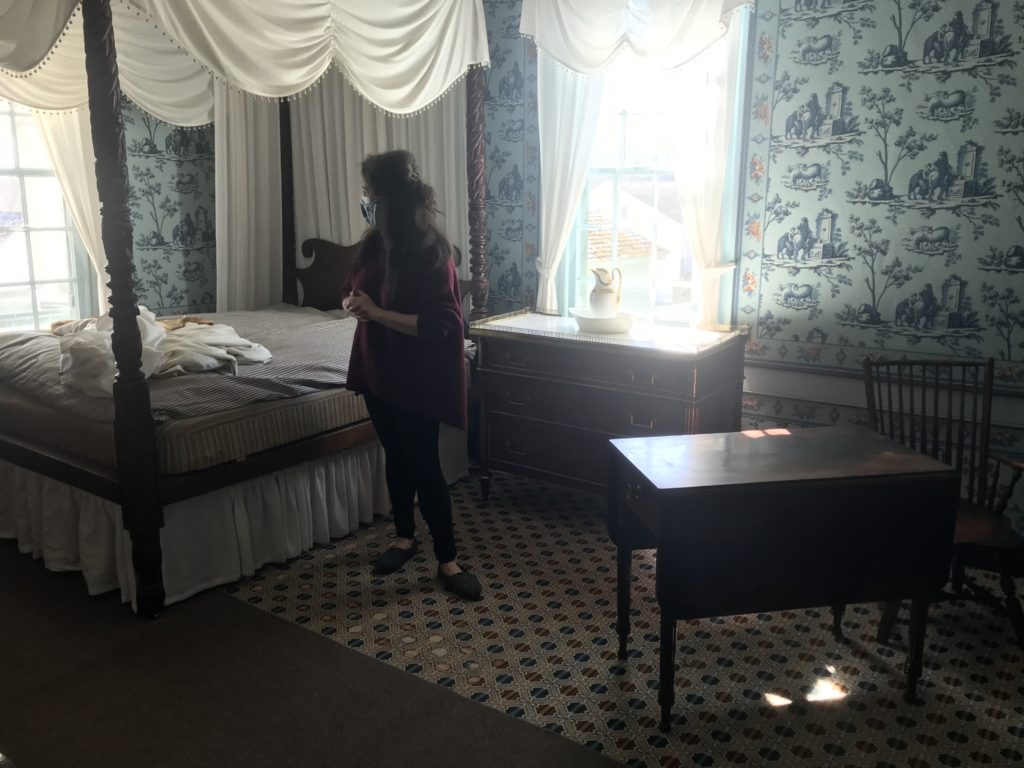
Highland is in the middle of an exciting project to re-interpret interior exhibit spaces. We sat down with Maria DiBenigno, Mellon Post-Doctoral Research Fellow, one of the key leaders in this initiative, to get her insight in to this important project.
How are you approaching re-interpretation of the current exhibit spaces?
Maria: For me interpretation is simply telling a story. I see Highland’s re-interpretation as re-telling stories about the site that reflect new research, collaborative input, and broader trends in the museum community. To this end re-interpretation is incorporating movement. This approach helps me think about historic house museums—too often viewed as static, frozen in time, about which we know everything—as active spaces of human habitation. In the Guesthouse, we work to show how the spaces were used regularly and reflective of early nineteenth-century narratives.
What questions do you ask when considering the best way to address these spaces?
Maria: I ask so many questions. Why would someone enter these rooms? What were they doing, hearing, smelling? How would enslaved people know the space differently from white visitors? How does one room tell a bigger story about regional travels, political maneuvers, agricultural shifts, international trade, economic debts — all supported by forced labor from enslaved persons? Public historians often say how they listen to the voices within a space: how does the room speak to a visitor? I also see re-interpretation in this way. How can we make the space come alive for guests in the twenty-first century? Sometimes, it’s as simple as leaving a glass on the bureau or a book open on a chair. Those small elements display a moment in time.
Of all the chapters in the story of Highland, which are you the most excited to tell?
Maria: I am incredibly excited about plans for the East Guest Room to depict a guest room in preparation: making the bed, uncovering tables, moving chairs, dusting corners, building the fire. It emphasizes that the Guesthouse was not Monroe’s main home; it was designed for his visitors at the start of his presidency. Importantly, this room will ask us to look beyond the room, into the yard, and across the physical and social landscape. We’re asking more questions: Who slept here? Who prepared it for guests? What could you see from its windows? How did decisions made by Monroe affect the enslaved families at Highland, and how did they react and/or resist? What can we learn about the United States from a small guest room on a plantation in Albemarle County, Virginia? I can’t wait to see the room completely re-interpreted from its current dining room depiction.
What do you hope that visitors will take away from the new experience?
Maria: That Highland is an active, evolving historic site where new knowledge is generated and shared with a diverse range of audiences. I hope visitors learn at least one new story about the site and take it home to their own communities.
Highland guests have the opportunity to lift the curtain on exhibit interpretation by registering for the Behind the Scenes at Highland. Make your reservation for this exclusive guided experience using the link below:
